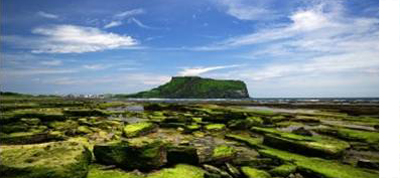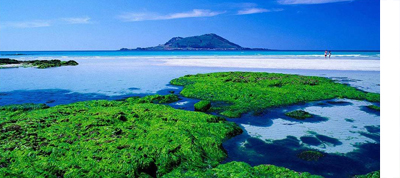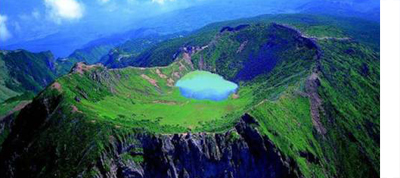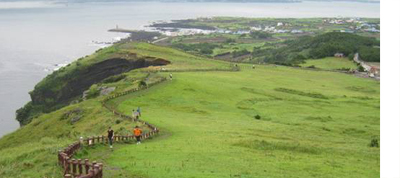| Jeju Island |
A Beautiful Legacy that is a Gift of Nature
Jeju Island is the largest volcanic island in Korea. Some of the top tourist sites include Hallasan National Park with a largely diverse species of flora and fauna, Seongsan Ilchulbong Peak with breathtaking views, and Manjanggul Cave, the world’s longest lava tube that has been registered as a UNESCO World Natural Heritage. Meanwhile, Jeju has recently won the Global Geopark certificate, and also has been selected as the New7Wonders of Nature. |
 |
 Seongsan Ilchulbong Peak [UNESCO World Heritage] Seongsan Ilchulbong Peak [UNESCO World Heritage]
Seongsan Ilchulbong Peak rose from under the sea in a volcanic eruption over 100,000 years ago. Located on the eastern end of Jejudo Island, there is a huge crater at the top of Seongsan Ilchulbong Peak. Seongsan Ilchulbong Peak rose from under the sea in a volcanic eruption over 100,000 years ago. Located on the eastern end of Jejudo Island, there is a huge crater at the top of Seongsan Ilchulbong Peak. |
 |
 Hyeopjae Beach Hyeopjae Beach
It is located on the west side of Hanrim-eup, and is part of Hanrim Park. The beautiful white color of the sand comes from the large amounts of crushed seashells that have been mixed in with the sand. |
 |
 Hallasan National Park [UNESCO World Heritage] Hallasan National Park [UNESCO World Heritage]
Hallasan Mountain rises up proudly from the center of Jeju Island and is perhaps the island's most memorable landmarks. Also called Mt. Yeongjusan, meaning "mountain high enough to pull the galaxy," Hallasan Mountain is widely known by scientists for its geological value. |
 |
 Olle Path Olle Path
If you're looking for a leisurely vacation spot where you can enjoy the beautiful scenery while walking on a well-maintained trail to stay fit, there's no better place to go than Jeju Island. There are 26 routes in total (21 main routes, and five sub-routes). Each route offers unparalleled views of Jeju Island's individual, dramatic landscape. |
 |
 |
| |

